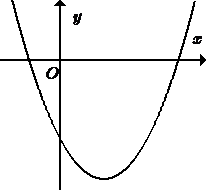Bào quan nào sau đây thực hiện nhiệm vụ quang hợp của cây?
Hãy suy nghĩ và trả lời câu hỏi trước khi xem đáp án
Ở thực vật, quá trình quang hợp chủ yếu được thực hiện nhờ diệp lục (chlorophyll nghĩa là diệp lục; chloro- nghĩa là thứ có màu xanh lục. Sắc tố này thường chứa trong các bào quan gọi là lục lạp.
Đáp án B
Tài liệu "Bộ Đề Kiểm Tra Giữa Học Kì I - Năm Học 2023-2024 - Sinh Học 11" tổng hợp các đề kiểm tra từ nhiều trường THPT trên toàn quốc, được biên soạn bám sát chương trình học. Đề thi bao gồm các dạng bài trắc nghiệm và tự luận, tập trung vào các nội dung chính: quang hợp, hô hấp tế bào, vận chuyển các chất trong cây, và các cơ chế sinh học cơ bản ở thực vật. Tài liệu hỗ trợ học sinh củng cố kiến thức, rèn luyện kỹ năng phân tích và giải quyết bài tập, sẵn sàng đạt kết quả cao trong kỳ kiểm tra giữa học kỳ I.
Câu hỏi liên quan
Các bước nghiên cứu hóa học được thực hiện theo thứ tự là
Mark the letter A, B, C, or D on your answer sheet to indicate the correct answer to each of the following questions.
Many Vietnamese people _______ their lives for the revolutionary cause of the nation.
Xác định một từ/ cụm từ SAI về ngữ pháp hoặc ngữ nghĩa, logic, phong cách.
Qua tác phẩm Tắt đèn cho thấy hình ảnh người phụ nữ nông dân bị áp bức đến cùng cực trong chế độ phong kiến.
Hệ thống phanh thuộc phần nào của ô tô?
"Thực hiện trách nhiệm của người kinh doanh đối với tổ chức, cộng đồng và xã hội." Đó là biểu hiện cho năng lực nào của người kinh doanh?
Chất rắn vô định hình thường có tính chất gì sau đây?
Quan sát hình ảnh sau và cho biết đây là loại động cơ đốt trong nào?
Các phân tử sinh học nào dưới đây được cấu tạo theo nguyên tắc đa phân?
Read the following passage about the Science in Service of Humanity and mark the letter A, B, C or D on your answer sheet to indicate the best answer to each of the following questions from 31 to 40.
Science has come out of its shell in laboratories to become a powerful force for human advancement. Modern scientific endeavors increasingly focus on addressing real-world challenges affecting communities globally. From developing vaccines that save millions to creating technologies connecting people across continents, science serves humanity in countless ways. This shift represents a fundamental evolution in how we perceive scientific progress—not merely academic pursuit but a practical tool for improving lives and solving pressing problems.
[I] Medical breakthroughs exemplify how science directly benefits humanity. [II] For instance, gene therapy offers hope for those with inherited conditions, while artificial intelligence helps diagnose diseases earlier and more accurately. [III] These advancements didn't happen overnight; scientists had to burn the midnight oil for years before achieving success. [IV] Their perseverance demonstrates that when science targets humanitarian goals, results can transform society profoundly.
Environmental science has emerged as another crucial domain where laboratory work translates into human welfare. Climate scientists provide data informing policy decisions affecting billions. Conservation biologists develop strategies to protect biodiversity, ensuring future generations benefit from natural resources. Agricultural researchers create drought-resistant crops helping communities withstand changing climate conditions. Despite these contributions, environmental science faces challenges including funding limitations, political resistance, and urgency of addressing accelerating climate change. Nevertheless, dedicated scientists continue their work, recognizing environmental health directly impacts human wellbeing.
The future of science in service of humanity looks increasingly collaborative and inclusive. Modern approaches incorporate diverse perspectives, including indigenous knowledge and community participation. Citizen science projects engage non-professionals in data collection, democratizing the scientific process. Open-access publishing makes research findings available to anyone with internet access, not just wealthy institutions. These developments suggest science's greatest potential lies in becoming more accessible and responsive to human needs. As we face complex global challenges, from pandemics to climate change, science serving humanity offers our best hope for a sustainable future.
Where in paragraph 2 does the following sentence best fit?
Researchers have developed treatments for previously incurable diseases, extended lifespans, and improved quality of life.
Ammonia (\(NH_3\)) là sản phẩm trung gian để sản xuất phân bón, đóng vai trò quan trọng trong nền kinh tế nông nghiệp của thế giới. \(NH_3\) trong công nghiệp được sản xuất từ hydrogen (\(H_2\)) và nitrogen (\(N_2\)). Trong đó, khí \(H_2\) được sản xuất chủ yếu từ khí methane (\(CH_4\)) theo phản ứng (1):
\(CH_4(g) + 2H_2O(g) \rightarrow CO_2(g) + 4H_2(g) \quad (1)\)
Để cung cấp nhiệt cho phản ứng (1), người ta tiến hành đốt cháy \(CH_4\):
\(CH_4(g) +2O_2(g) \rightarrow CO_2(g) + 2H_2O(g) \quad (2)\)
Xét các quá trình ở điều kiện chuẩn, cho biết \(\Delta H_{298}\) của các chất như sau:
Quá trình này sinh ra lượng lớn khí \(CO_2\), gây ô nhiễm môi trường. Để tạo ra 1 tấn khí \(H_2\) thì tổng lượng khí \(CO_2\) sinh ra từ phản ứng (1) và (2) là x tấn. Giả sử hiệu suất các quá trình là 100%, lượng nhiệt sinh ra ở phản ứng (2) chỉ dùng để cung cấp cho phản ứng (1).
Tính x (làm tròn đến một chữ số thập phân).
Trên Trái Đất không có vòng đai nhiệt nào sau đây?
Read the following passage about the Science in Service of Humanity and mark the letter A, B, C or D on your answer sheet to indicate the best answer to each of the following questions from 31 to 40.
Science has come out of its shell in laboratories to become a powerful force for human advancement. Modern scientific endeavors increasingly focus on addressing real-world challenges affecting communities globally. From developing vaccines that save millions to creating technologies connecting people across continents, science serves humanity in countless ways. This shift represents a fundamental evolution in how we perceive scientific progress—not merely academic pursuit but a practical tool for improving lives and solving pressing problems.
[I] Medical breakthroughs exemplify how science directly benefits humanity. [II] For instance, gene therapy offers hope for those with inherited conditions, while artificial intelligence helps diagnose diseases earlier and more accurately. [III] These advancements didn't happen overnight; scientists had to burn the midnight oil for years before achieving success. [IV] Their perseverance demonstrates that when science targets humanitarian goals, results can transform society profoundly.
Environmental science has emerged as another crucial domain where laboratory work translates into human welfare. Climate scientists provide data informing policy decisions affecting billions. Conservation biologists develop strategies to protect biodiversity, ensuring future generations benefit from natural resources. Agricultural researchers create drought-resistant crops helping communities withstand changing climate conditions. Despite these contributions, environmental science faces challenges including funding limitations, political resistance, and urgency of addressing accelerating climate change. Nevertheless, dedicated scientists continue their work, recognizing environmental health directly impacts human wellbeing.
The future of science in service of humanity looks increasingly collaborative and inclusive. Modern approaches incorporate diverse perspectives, including indigenous knowledge and community participation. Citizen science projects engage non-professionals in data collection, democratizing the scientific process. Open-access publishing makes research findings available to anyone with internet access, not just wealthy institutions. These developments suggest science's greatest potential lies in becoming more accessible and responsive to human needs. As we face complex global challenges, from pandemics to climate change, science serving humanity offers our best hope for a sustainable future.
Which of the following can be inferred from the passage?
Cho các số nguyên \(\mathrm{a}, \mathrm{b}, \mathrm{c}\) thỏa mãn \(a+\frac{b+\log _{2} 5}{c+\log _{2} 3}=\log _{6} 45\). Tổng \(a+b+c\) bằng
Cho hàm số \(y = a{x^2} + bx + c\) có đồ thị như hình bên dưới. Khẳng định nào sau đây đúng?

Đâu là nhận định đúng khi nói về chức năng phân bổ nguồn lực của giả cả thị trường?
To children, family plays a role in ____.
Read the passage below and choose A, B, C or D.
Millions of people are using cellphones today. In many places, it is actually considered unusual not to use one. In many countries, cellphones are very popular with young people. They find that the phones are more than a means of communication - having a mobile phone shows that they are cool and connected.
The explosion in mobile phone use around the world has made some health professionals worried. Some doctors are concerned that in the future many people may suffer health problems from the use of mobile phones. In England, there has been a serious debate about this issue. Mobile phone companies are worried about the negative publicity of such ideas. They say that there is no proof that mobile phones are bad for your health.
On the other hand, medical studies have shown changes in the brain cells of some people who use mobile phones. Signs of change in the tissues of the brain and head can be detected with modern scanning equipment. In one case, a traveling salesman had to retire at young age because of serious memory loss. He couldn't remember even simple tasks. He would often forget the name of his own son. This man used to talk on his mobile phone for about six hours a day, every day of his working week, for a couple of years. His family doctor blamed his mobile phone use, but his employer's doctor didn't agree.
What is it that makes mobile phones potentially harmful? The answer is radiation. High-tech machines can detect very small amounts of radiation from mobile phones. Mobile phone companies agree that there is some radiation, but they say the amount is too small to worry about.
As the discussion about their safety continues, it appears that it's best to use mobile phones less often. Use your regular phone if you want to talk for a long time. Use your mobile phone only when you really need it. Mobile phones can be very useful and convenient, especially in emergencies. In the future, mobile phones may have a warning label that says they are bad for your health. So for now, it's wise not to use your mobile phone too often.
What is the word “potentially” in paragraph 4 closest in meaning to?
Hành động nào sau đây nên làm khi nhận được một tệp đính kèm có tên lạ trong thư điện tử từ người thân?
Mệnh đề nào sau đây đúng?
Tập hợp các quy phạm pháp luật có đặc tính chung để điều chỉnh các quan hệ xã hội trong một lĩnh vực nhất định của đời sống xã hội gọi là gì? Ngành luật.
















